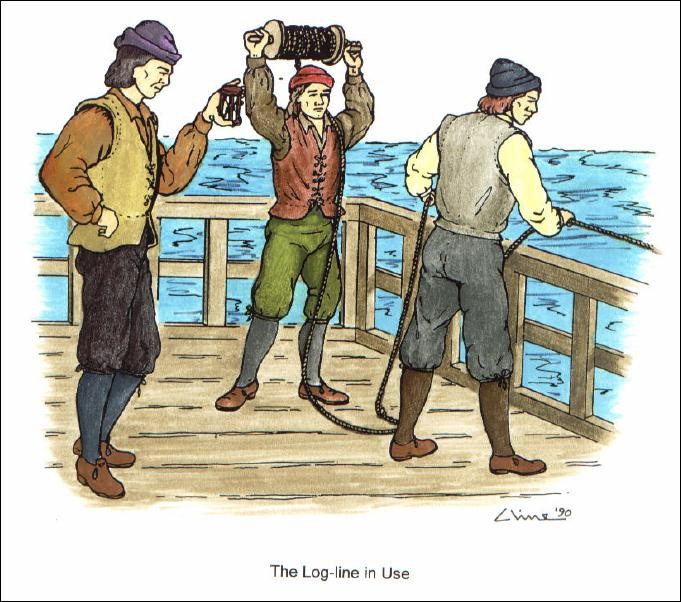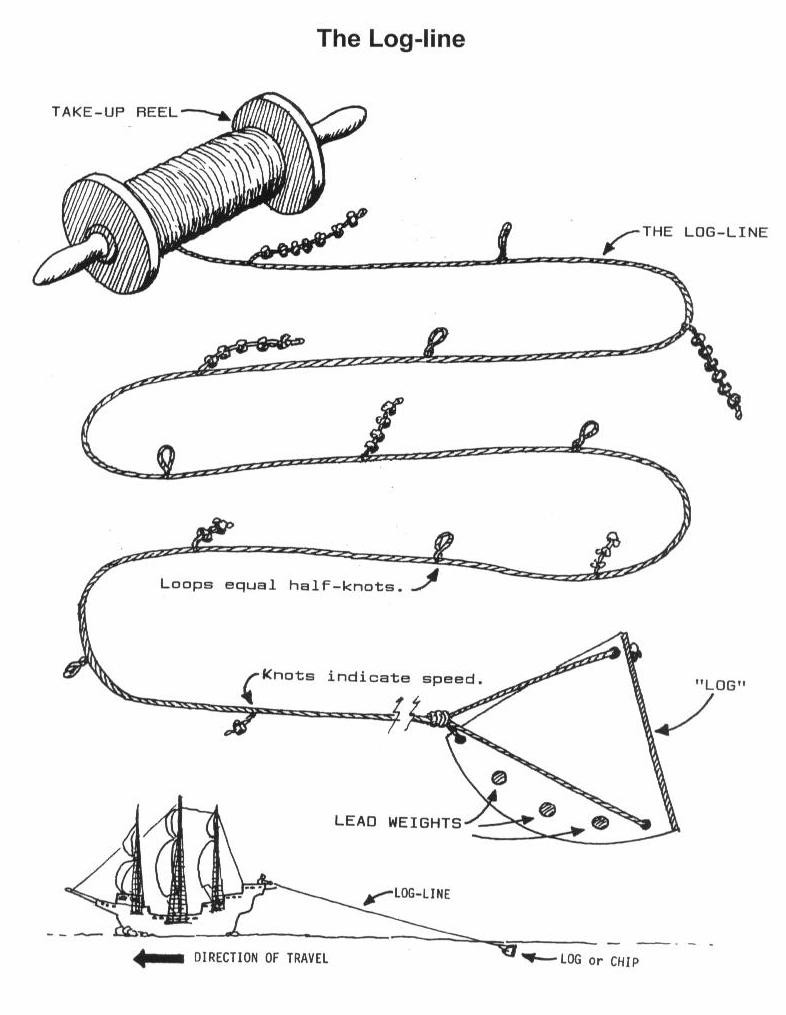 The log line is an old instrument for measuring the speed of the ship. It consisted of a flat piece of wood (the log), which was weighted at the bottom edge to enable it to float upright in the water. To the log was attached a long rope (log line). The log line was wound on a spool (log reel) so that it could be reeled out after the log was thrown into the water at the aft (rear) of the ship. The friction of the water held the log in place as the ship sailed away from it.
The log line is an old instrument for measuring the speed of the ship. It consisted of a flat piece of wood (the log), which was weighted at the bottom edge to enable it to float upright in the water. To the log was attached a long rope (log line). The log line was wound on a spool (log reel) so that it could be reeled out after the log was thrown into the water at the aft (rear) of the ship. The friction of the water held the log in place as the ship sailed away from it.
On the log line, knots were tied at intervals of 7 fathoms — one fathom being equal to 6 feet. As the ship sailed away from the log, the sailors taking the reading would count the number of knots that passed over the rail in a period of half-a-minute. That gave them their approximate speed in knots (equal to land miles-per-hour). This was a rather crude way of taking the measurement of speed, but it was the best available in those times.
In later times the sailors used a 28-second glass for speeds under 8 knots, and a 14-minute glass if the speed exceeded 8 knots-per-hour. But it must be remembered that the fastest the Mayflower would have traveled would probably have been between 4 and 6 knots.
















